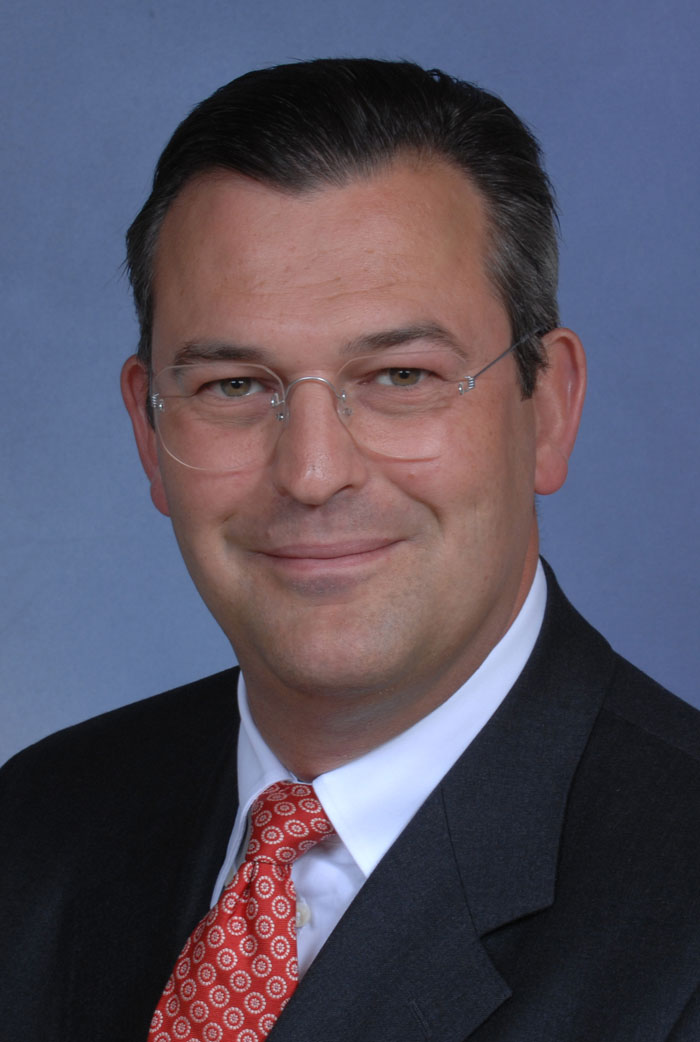Our timetable for the future
Posted: 26 September 2009 | | No comments yet
Since March 2008, Tilo Brandis has been President and CEO of RAIL.ONE GmbH. After his studies at various universities in Europe and at Harvard Business School, Brandis began his career at HBS Consulting Partners as a Project Manager and Management Consultant…


Tilo Brandis, President and CEO, RAIL.ONE GmbH
In 1997, he moved to Siemens AG Transportation Systems. In 2003, he took charge of Siemens AG A&D Assembly Systems, with around 2,300 staff and with sales of approximately €600 million. Until he moved to RAIL.ONE, Brandis directed the acquisition of the US software company UGS for Siemens AG. With more than 800 employees and 18 locations in nine countries, RAIL.ONE is one of the world’s leading providers of railway track systems, with comprehensive consulting and engineering competence for all areas of application…
An effective transport system is one of the fundamental prerequisites for our modern society, for economic growth, and for full employment and prosperity. This applies to both passenger and freight transport. The expansion of the European Union and the accelerating globalisation of economic processes pose tremendous challenges to systems of environmentally friendly mobility – within the context of limited resources and ongoing growth. I firmly believe that railway systems, for the foreseeable future, represent the mode of transport that can best meet this challenge. Key perquisites here are reliable and high-quality infrastructure, continuous modernisation and optimisation of rail networks, as well as systematic expansion of rail lines.
I see three major areas of work that should be addressed in Europe over the coming years. The most urgent task will be further expansion of the Trans-European High-Speed Network, as well as modernisation and upgrading of existing lines. Essential here will be liberalisation of European passenger-transport markets: a process that has begun, but that has reached only irregular stages of completion throughout Europe. Not least, we must work to reduce emissions in order to make railway travel more attractive and environmentally friendly. Special measures are required, especially in cities and residential areas for reduction of noise and vibrations – e.g., by mass-spring systems.
More than 300 patents and applications for industrial property rights, as well as numerous reference projects for all areas of application, demonstrate the high level of technical competence of RAIL.ONE as a leading provider for rail systems for all application requirements: mainline and urban-transit passenger transport, freight and heavy-haul traffic, country-specific standards, special climate conditions, and demands for special axle loads and speeds. For each of these challenges and for each customer, RAIL.ONE develops individual sleeper and track solutions. As the only planner and builder of track production-plant systems with four specific processes and plant types, we are capable of exactly orienting the output and production processes of our plants to the required capacity. In this way, we can flexibly optimise our products and track systems for the respective circumstances, and, as a result, can achieve longer service lives and reduced life-cycle costs for our customers. Intelligent logistics concepts and decentral placement of our production locations in a number of European countries assure short delivery distances and reduction of overall costs and consumption of resources.
Good performance is defined today by four parameters: quality, costs, speed, and sustainability. For the development and construction of track systems, this means innovations for intelligent solutions and optimised logistics services for deliveries just in time. One good example is the RHEDA 2000® ballastless track system for applications with civil-engineering structures such as tunnels and bridges. RHEDA 2000® is the only ballastless track technology in the world that is used for all three leading high-speed train systems: ICE 3, TGV-Thalys, and Shinkansen. It is compatible with the leading signal systems LZB, ETCS, and UM 71, and therefore avoids safety risks resulting from long adaptation phases. The installation technology for RHEDA 2000® is simple and does not require special equipment. It enables construction by local track and civil-engineering companies, which benefits local and domestic economies by railway construction projects.
However, RHEDA 2000® is only one example where RAIL.ONE has succeeded in developing good solutions in the sense of the four stated parameters. RAIL.ONE offers a portfolio of flexible systems that can be individually matched to the requirements of the customer – and that are focused on quality, costs, speed, and sustainability. The future of transport lies here – and not only for railway systems.







